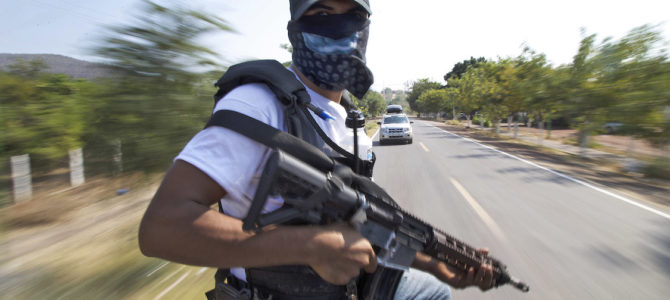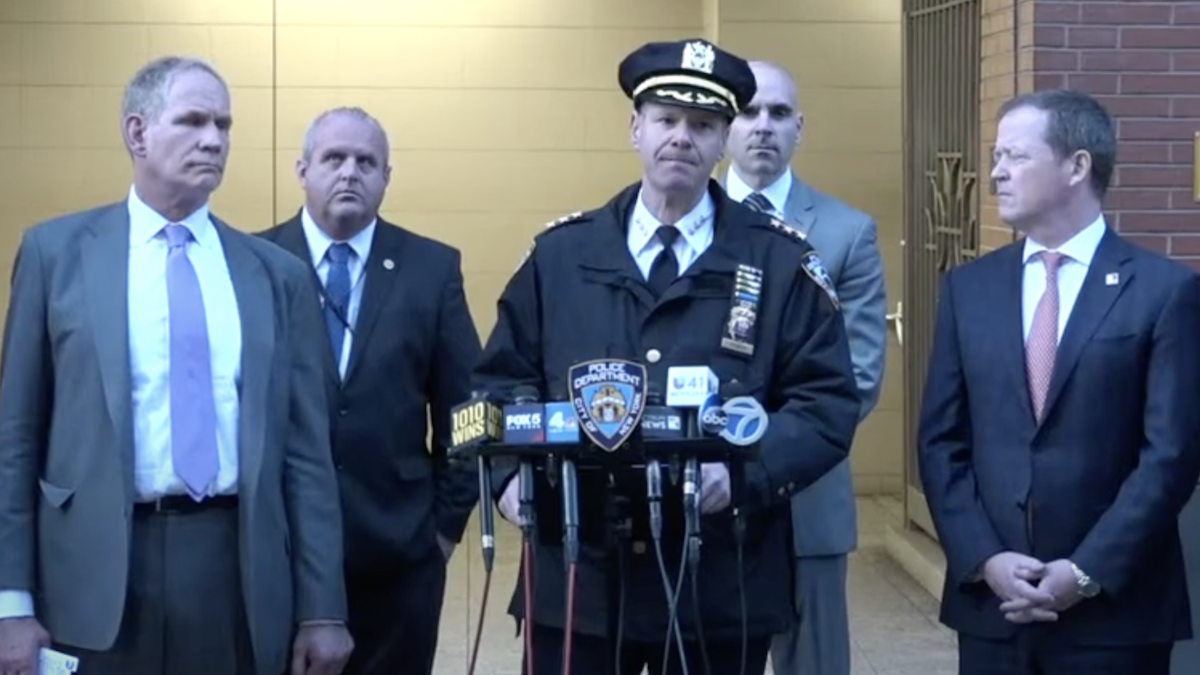
One of the most visible and insistent demands of the Black Lives Matter movement is the abolition or disbandment of the police—or at the very least defunding them, which taken to the extreme would amount to the same thing. “Abolish the police” has become a rallying cry among protesters and a litmus test for elected officials seeking to ally with them.
What comes after the police have been abolished remains unclear. Protesters and politicians alike are hazy on details, preferring instead to talk about “reimagining public safety” and throwing around vague terms like “community policing.”
Of course, in concrete terms what would happen if a city actually disbanded its police department, as the Minneapolis City Council pledged to do over the weekend, is that the county sheriff’s office or the state police—or perhaps even federal law enforcement—would step into the vacuum and the city would have almost no say in how it was policed or what policies county and state law enforcement agencies adopted.
But let’s say these ultra-progressive municipal governments could get their wish and abolish the police in their cities entirely. What would happen? Inevitably, an armed group would emerge and impose a monopoly on the use of force.
If you want an idea of how that works, look to our southern neighbor, Mexico, where over the past decade endemically corrupt police departments in some areas have been supplanted by autodefensas, or local self-defense militias. But before you get too excited about the prospect of paramilitary autodefensas policing American cities, understand that in Mexico these groups are a mixed bag at best—and at worst they’re not much better than the corrupt local police and cartel gunmen they replaced. More importantly, their mere presence in Mexico was and is a disturbing sign of societal decay.
The Rise And Fall Of Mexico’s Autodefensas
To understand why, a bit of background is needed. The modern autodefensas movement in Mexico arose during some of the most violent years of Mexico’s ongoing drug war. In 2013, a doctor from the cartel-ravaged state of Michoacán, José Manuel Mireles Valverde, organized one of the first self-defense militias to fight against the Knights Templar Cartel. He initially recruited ordinary men, shop keepers and farmers, to hunt down cartel henchmen and drive them out of their towns.
Initially, these ad-hoc militias met with some success, capturing or killing members of the Knights Templar, setting up roadblocks and ambushes, and expanding the number of militias operating throughout Michoacán. But as the violence in the region increased, the militias eventually caught the attention of the Mexican government, which deployed the military against both cartels and autodefensas. Mireles was badly injured in a plane crash in 2014 and was soon pushed out of a leadership role. Later that year the government ordered autodefensas to disarm as part of an effort to bring them under the control of state-controlled Fuerza Rural, or Rural Police Force.
By then, the line between autodefensas and cartels had begun to blur. The militias had been infiltrated by cartel members, including former members of the Knights Templar who knew the cartel was losing power. One former Knights Templar member, Nicolás Sierra Santana, known as “El Gordo,” joined the autodefensas movement early on but left when the government ordered them to disarm. He and other militia members went on to create a new drug cartel, “Los Viagras,” which today is affiliated with the powerful Jalisco New Generation Cartel.
Some of these self-defense militias were, for lack of a better term, fake autodefensas. In 2014, vigilante leader Luis Antonio Torres, nicknamed “Simón El Americano,” clashed with a lime grower named Hipolito Mora, who along with Mireles was one of the first founders of autodefensas. A large-scale shootout between the two groups in Tierra Caliente left Mora’s son dead, and later both leaders, along with some followers, turned themselves in to authorities.
The clash came just as the government was flooding the region with federal troops to prevent a regional civil war between armed vigilante groups—a move that many, including Catholic Bishop Miguel Patino Velazquez of Apatzingan, condemned, saying the government was willing to disarm self-defense groups but not the Knights Templar or its predecessor, La Familia Michoacana. Patino’s outrage underscored the deep distrust of institutions many residents of Michoacán had—and still have.
Even so, the autodefensas movement quickly went from being an organic uprising against a vicious cartel to a vigilante free-for-all. As The Guardian reported at the time:
Violence in the state has continued as government efforts to institutionalise the vigilantes into a rural police force have struggled in the face of deep rivalries between some of the leaders. The new rural police has also been damaged by multiple accusations that a significant number of commanders and officers have links to the Caballeros [Knights Templar] or other gangs operating in the region.
As the government stepped in to control the autodefensas movement, it became increasingly clear that cartel members were joining self-defense militias, especially in Michoacán and neighboring Guerrero state. Sometimes it worked in the opposite direction. Lacking resources and weapons, self-defense militias would turn to drug cartels for financing, and would later be used by drug lords as proxy forces against their rivals.
Today, autodefensas remain active in parts of Mexico but they have largely melded into the ever-shifting patchwork of gangs, cartel off-shoots, and corrupt local police forces vying for power and territory. The fragmenting of Mexico’s criminal gangs and armed groups has helped fuel rising violence in recent years, with this year on track to break last year’s record for homicides. As far as violence and corruption go, things are worse in Mexico now than they were when Mireles formed the first autodefensa group.
That is to say, the rise of self-defense militias in Mexico, no less than the rise of cartels, is a direct result of the collapse of civil authority. Absent a functioning state, militias are no more accountable to the general public than a drug cartel—and no more capable of resisting corruption than the local or federal police.
Autodefensas Are A Sign Of Societal Decay
The brief history recounted above should serve as a reminder to Americans flirting with the idea of abolishing the police, which for BLM activists isn’t just a slogan. Aside from Minneapolis—where on Saturday the mayor, Jacob Frey, was booed and heckled out of a rally after saying he didn’t support “the full abolition” of the police—cities like Los Angeles, Portland, and Toronto are taking steps to reduce funding for law enforcement, in some cases redirecting tens of millions of dollars to various community programs while slashing police budgets.
Make no mistake, “defund the police” doesn’t mean “reform the police.” It means take the money away, which means fewer police on the street—and in the case of Minneapolis, apparently no municipal police on the street.
That local elected officials would even consider such policies is deeply troubling. America might not be a failing state overrun with drug cartels and corrupt politicians, but it is sliding in the direction of Mexico. We have declining levels of confidence in our institutions and declining levels of trust across society in general. The fabric of our civic life is fraying badly, and calls to abolish the police are a sign of that.
Despite the insistence of the protesters, getting rid of law enforcement won’t usher in a more just or equitable order. But it will invite new arrangements for security, as it did in Mexico. These arrangements, however well-intentioned, will fall prey to the same corruption and unaccountability as the forces they replace, especially if the underlying causes of societal decay are left to fester.









